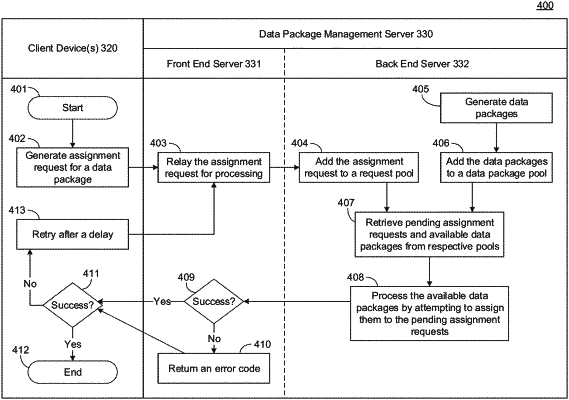| CPC H04L 47/12 (2013.01) [G06Q 10/0633 (2013.01); G06Q 10/0832 (2013.01); G06Q 10/10 (2013.01); H04L 47/746 (2013.01)] | 20 Claims |

|
1. A computer-implemented system for managing incoming requests and data package assignments, the system comprising:
a memory storing instructions; and
at least one processor configured to execute the instructions for:
generating a plurality of data packages comprising one or more products from a combination of orders;
receiving an assignment request from a user device of a fulfillment center picker;
displaying a waiting screen on a user interface in response to the received request;
determining whether the assignment request contains restrictions, wherein the restrictions comprise at least of an amount of data packages, a location of the user device, or a user type;
adding a priority parameter to the assignment request based on detecting that the assignment request corresponds to a previously failed request;
assigning one or more data packages with priority parameters to the assignment request based on the determined restrictions and in response to the one or more data packages being associated with a product physical location matching a physical location of the user device;
returning any unassigned data packages of the one or more data packages to a data package pool;
adding the unassigned data packages to the front of a request pool queue to assign the unassigned data packages to an assignment request;
prioritizing at least one assignment request associated with an unassigned data package before other assignment requests by adding the assignment request associated with the unassigned data package to the front of the request pool queue;
transmitting at least one assignment request from the request pool queue;
updating the user interface in response to the transmission; and
transmitting an error code indicating a delay after which the user device may resubmit the assignment request.
|